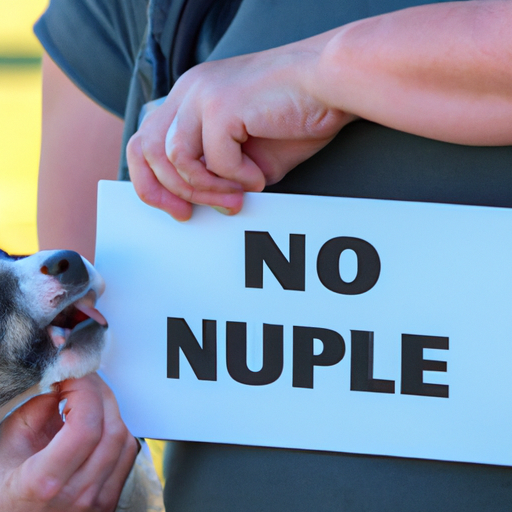Teaching your dog not to bite is an essential part of being a responsible pet owner. Biting can be a dangerous behavior for both humans and other animals, but with persistence, dedication, and the right techniques, you can successfully train your pup to keep their teeth to themselves.
1. Understanding Why Dogs Bite
Before you can effectively teach your dog not to bite, it’s crucial to understand why dogs bite in the first place.
- Fear and Anxiety: Dogs often bite when they feel threatened or anxious. This can be triggered by an unfamiliar environment, a new person or animal, or a sudden, loud noise.
- Pain or Illness: If a dog is in pain or ill, they may bite in an attempt to protect themselves.
- Protection of Territory or Possessions: Dogs are territorial creatures. They may bite to defend their territory, food, or toys.
By understanding the root cause of your dog’s biting, you can tailor your training approach to address these triggers.
2. Socializing Your Dog
Socialization is a crucial aspect of teaching a dog not to bite. The process involves exposing your dog to a variety of people, environments, and other animals in a safe and controlled manner.
Here are some steps to effectively socialize your dog:
1. Start the process when your dog is still a puppy if possible.
2. Gradually introduce your dog to different people, environments, and animals.
3. Always ensure your dog feels safe during these interactions.
4. Reward your dog for positive interactions with treats or praise.
By exposing your dog to a wide range of experiences, you can help them understand that they don’t need to bite to feel safe.
3. Training Techniques to Prevent Biting
Effective training is key in teaching your dog not to bite. Below are some techniques you can use:
| Technique | Description |
|---|---|
| Redirecting | When your dog attempts to bite, redirect their attention to something else, like a toy. |
| Time-outs | If your dog bites, remove them from the situation for a brief time-out. |
| Positive reinforcement | Reward your dog for non-aggressive behavior with treats, praise, or petting. |
Remember, consistency is key. Stick with your chosen techniques and don’t forget to reward your dog for good behavior.
4. What to Do If Biting Continues
If your dog continues to bite despite your best training efforts, it may be time to seek professional help. A professional dog trainer or a veterinary behaviorist can provide personalized guidance based on your dog’s specific needs.
5. Preventing Biting in the Future
Preventing biting in the future requires ongoing training and socialization. Continue practicing the techniques you’ve learned and keep exposing your dog to new experiences in a safe, controlled manner.
Always remember: Training a dog not to bite takes time and patience. Don’t get discouraged if progress seems slow. With persistence and consistency, your efforts will pay off.
Frequently Asked Questions (FAQs)
Q: At what age should I start training my dog not to bite?
A: It’s ideal to start training as early as possible, typically when the dog is still a puppy. However, dogs of any age can learn not to bite with consistent training.
Q: What should I do if my dog bites someone?
A: If your dog bites someone, it’s important to act immediately. Restrain your dog and check on the person who was bitten. Seek medical help if necessary.
Q: How can I tell if my dog’s biting is due to pain or illness?
A: If your dog’s behavior changes suddenly, it might be due to pain or illness. Look for other signs of discomfort like loss of appetite, lethargy, or changes in behavior. If you’re unsure, consult with your vet.
Q: Is it normal for puppies to bite?
A: Yes, it’s normal for puppies to bite as they explore the world around them and learn about their surroundings. However, it’s crucial to teach them that biting is not acceptable behavior.
Q: Can an older dog be trained not to bite?
A: Yes, an older dog can be trained not to bite, but it might take more time and patience compared to training a puppy.
Remember, every dog is unique and what works for one might not work for another. Stay patient, persistent, and consistent in your training efforts. Your dedication will ultimately help foster a safer and more peaceful environment for both you and your beloved pet.



